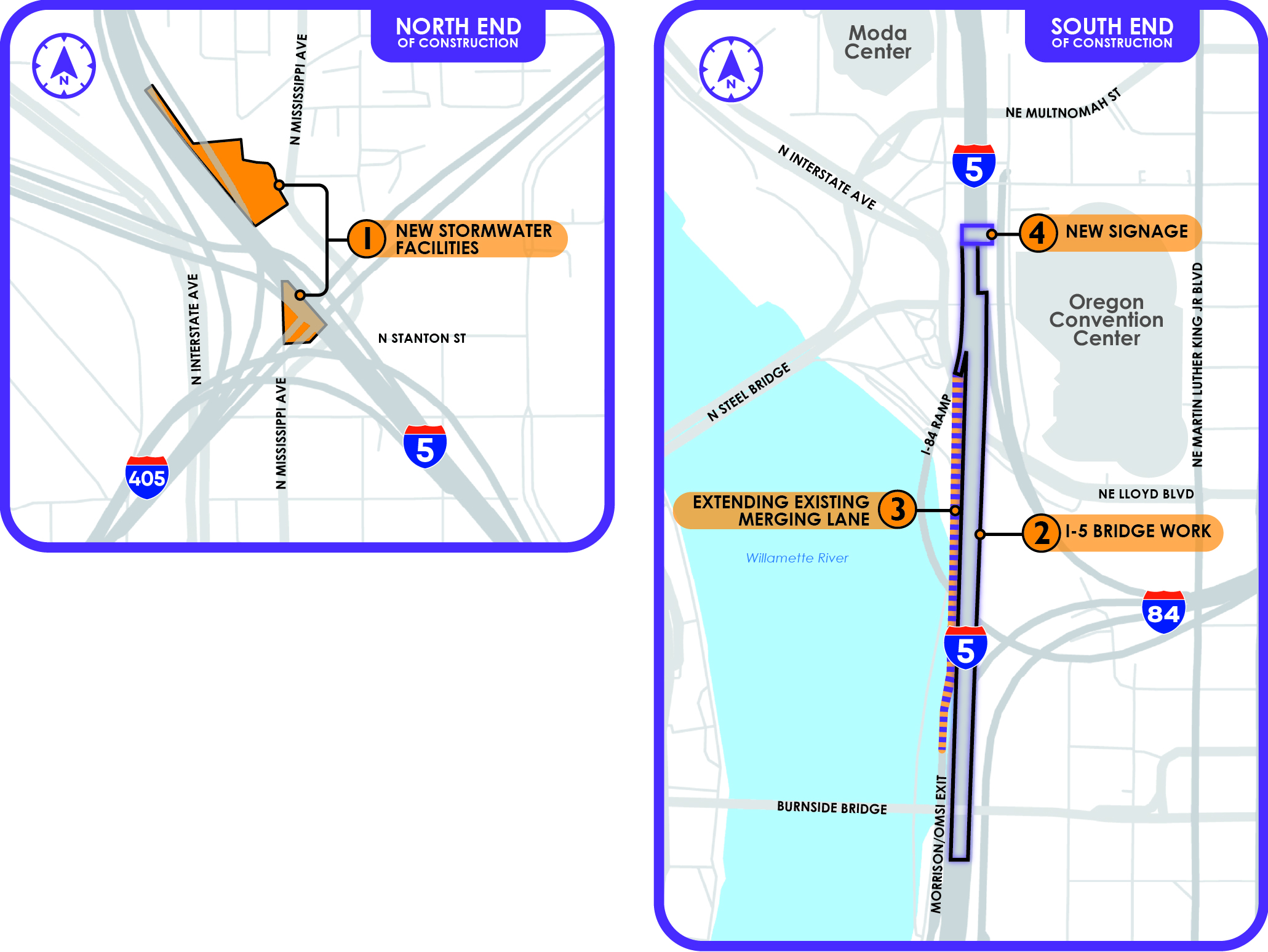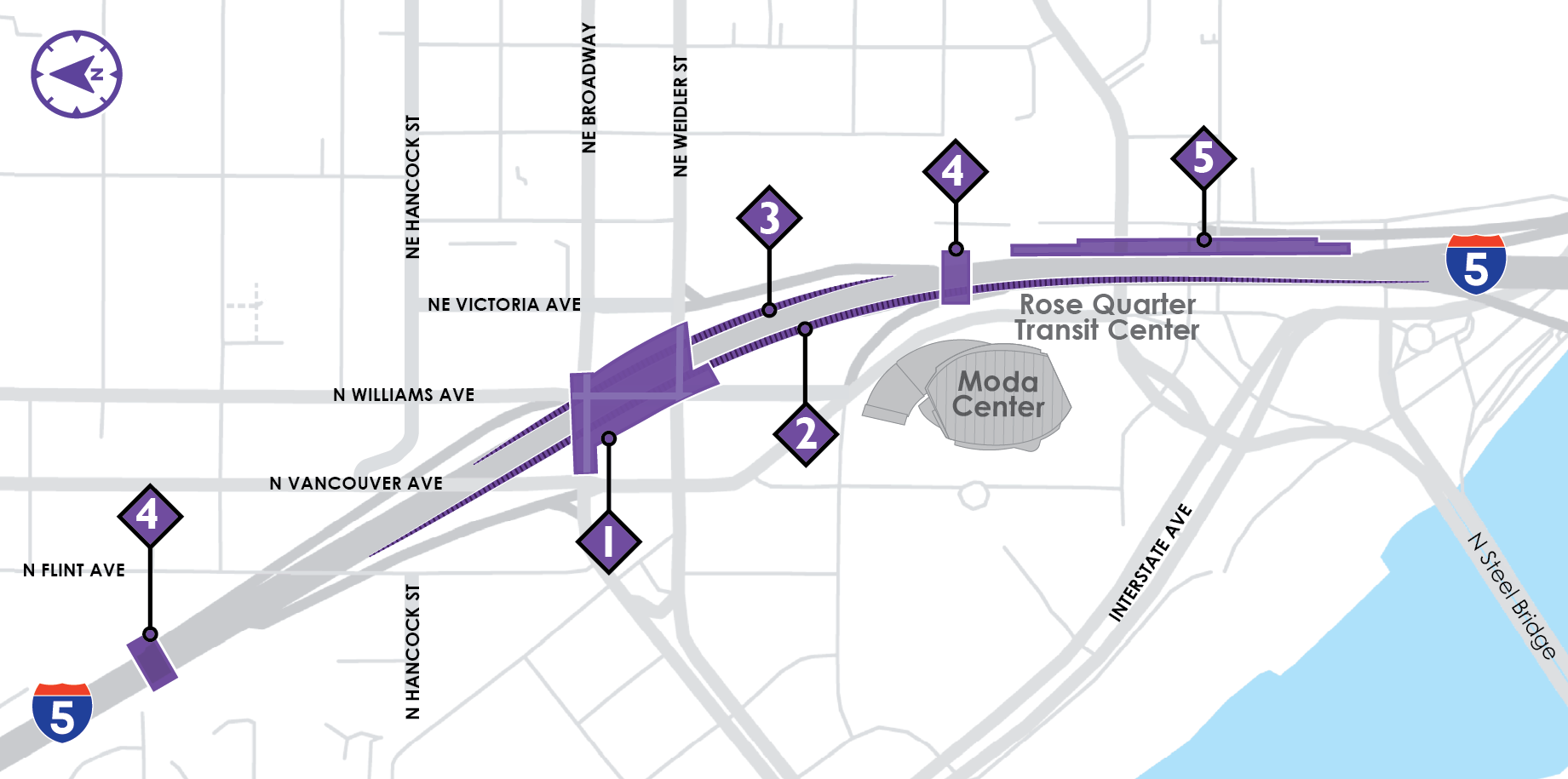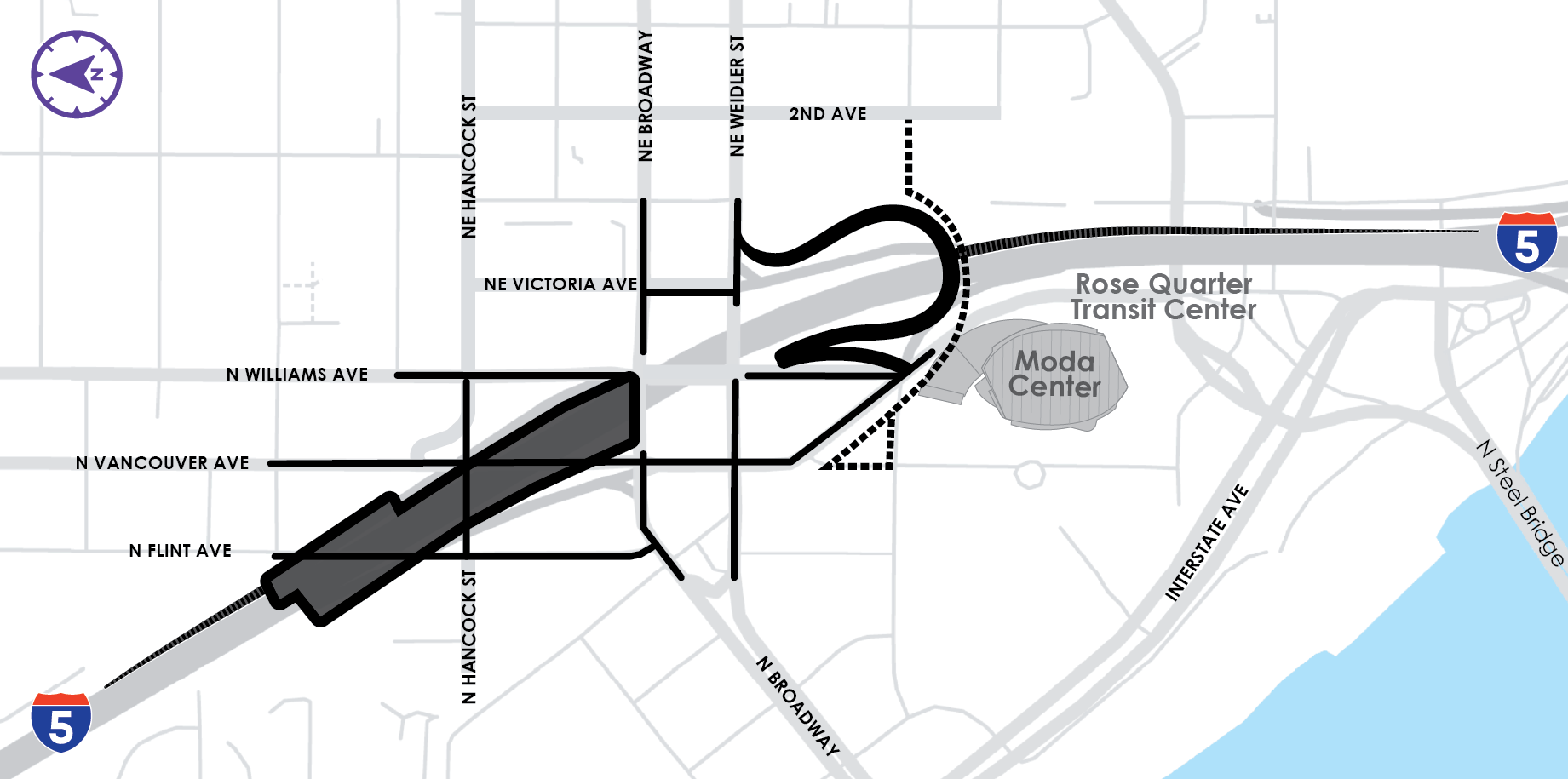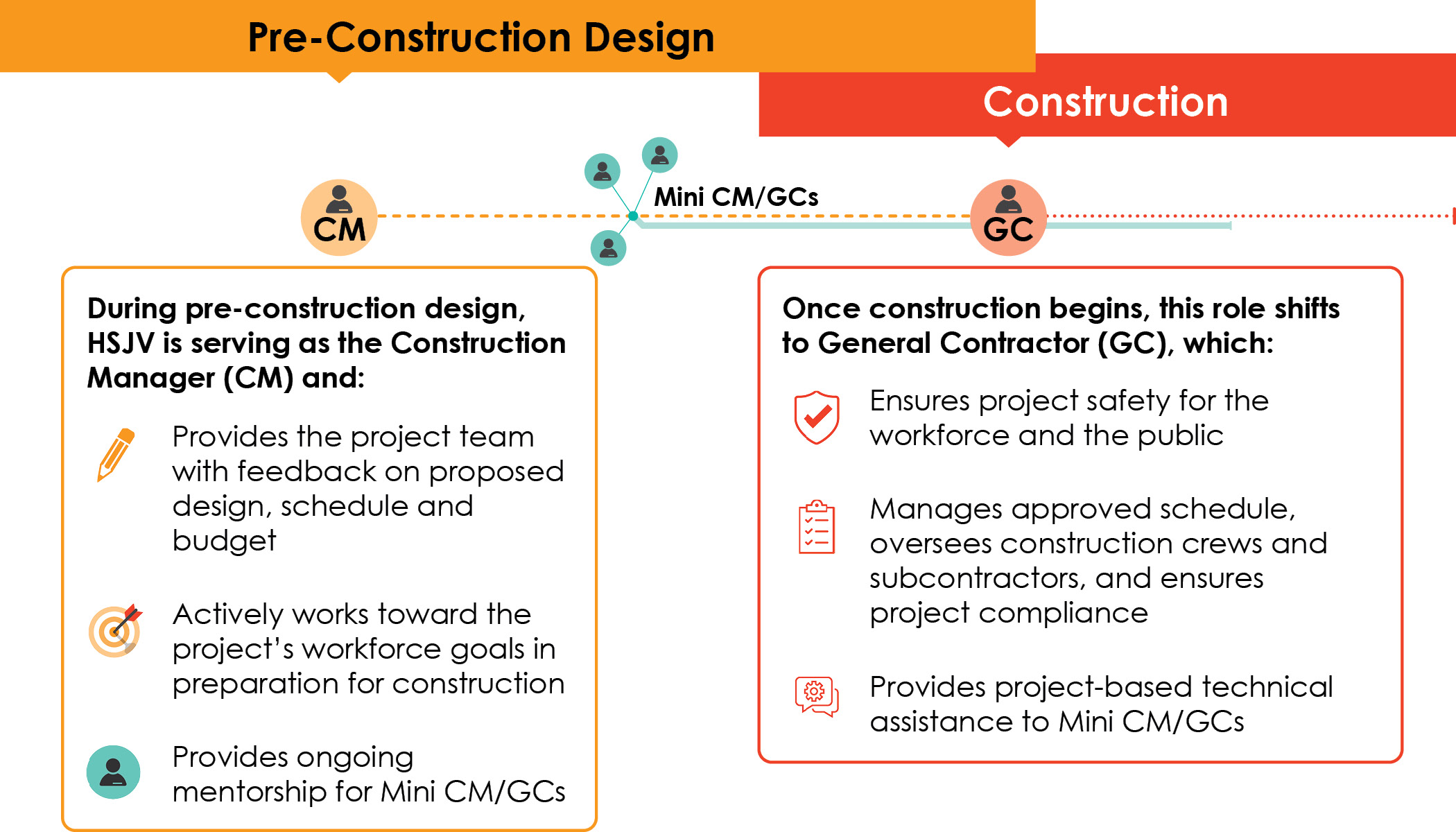Construction
Current & Future Construction Phases
Construction of the I-5 Rose Quarter Improvement Project began in summer 2025 with Phase 1A construction.
The tabs below and Phase 1A Construction Fact Sheet share more information about current and future construction phases.
For information about active and future travel impacts, visit our Construction Travel Impacts page.

Phase 1A Construction (Summer 2025)
- Stormwater improvements near the intersection of I-5 and I-405
- Bridge work near the intersection of I-5 and I-84
- Extension of the southbound auxiliary lane along I-5 between the I-84 and Morrison Bridge/OMSI exits
- Signage for highway cover safety and construction

Phase 1 Construction
- Build southern portion of the highway cover (30% of cover length) and multimodal improvements
- Complete southbound auxiliary lane and shoulder from I-405 to the Moda Center
- Extend the northbound auxiliary lane and shoulder under the highway cover
- Install signage for highway cover safety and construction
- Widen Holladay/Hassalo bridge

Future Project Phases
Construction of Phase 1A and Phase 1 components will support future construction phases to complete the project in full. ODOT and our partners – City of Portland, Metro, Albina Vision Trust and the Portland Trail Blazers – are committed to completing the project in its entirety. Future project phases are currently unfunded.
Numbers on the map correspond to descriptions on the right.
Phase 1A (2025)
Phase 1A Construction (Summer 2025-Fall 2026)
Construction Cost: $75 million
Components:
- Stormwater improvements near the intersection of I-5 and I-405
- Bridge preservation and seismic resiliency work near the intersection of I-5 and I-84
- Extension of the southbound auxiliary lane along I-5 between the I-84 and Morrison Bridge/OMSI exits
- Signage for highway cover safety and construction
Traffic Impacts: Visit the Construction Travel Impacts page to learn more.
Benefits:
- Builds the southern portion of the southbound auxiliary lane between I-84 and the Morrison Bridge exit
- Creates more time and space for merging by relocating the crash barrier between I-5 southbound and I-84 off-ramp
- Provides independent utility without being dependent on the remainder of the project to proceed
- Gets the construction community working in 2025
- Builds capacity for Disadvantaged Business Enterprises and small businesses
- Preserves existing infrastructure and improves water quality
Phase 1
Phase 1 Construction
Components:
- Build southern portion of the highway cover (30% of cover length) and multimodal improvements
- Complete southbound auxiliary lane and shoulder from I-405 to the MODA Center
- Extend the northbound auxiliary lane and shoulder under the highway cover
- Install signage for highway cover safety and construction
- Widen Holladay/Hassalo bridge
Benefits:
- Provides needed freeway safety improvements
- Creates community development opportunities on and off the highway cover following Phase I
- Uses an efficient approach to construction that minimizes cost and keeps the traveling public moving during construction
- Facilitates the relocation of the southbound I-5 off-ramp in a future construction phase
How We Are Building It
Construction Manager/General Contractor
A Construction Manager/General Contractor (CM/GC) is a project delivery method where project contracts are released in two phases: first design and later construction. The project owner hires a contractor to provide feedback during the design phase, before construction begins.
A Mini CM/GC method follows the same phasing but is geared to smaller companies. Mini CM/GCs join the project during the design phase and complete work on smaller work contracts within the larger project.


Hamilton/Sundt, a Joint Venture (HSJV), in association with Raimore Construction (one of the largest Black-owned contractors in Oregon), is the project’s Construction Manager/General Contractor (CM/GC).
In 2022, ODOT selected three Mini CM/GCs (all Disadvantaged Business Enterprises) to complete early work. The Project team, including the project’s CM/GC, also published the Diversity and Subcontracting Plan. To learn more about the project’s commitment to workforce development, visit our Workforce Opportunities page.


